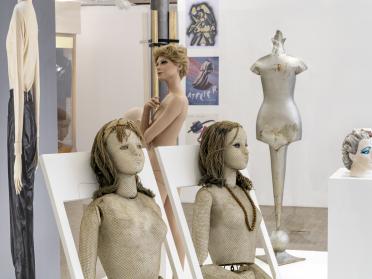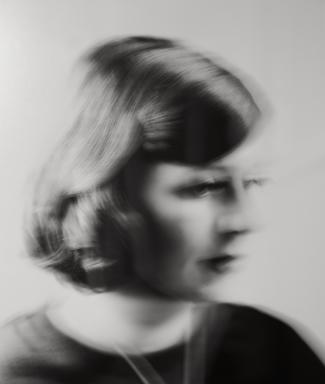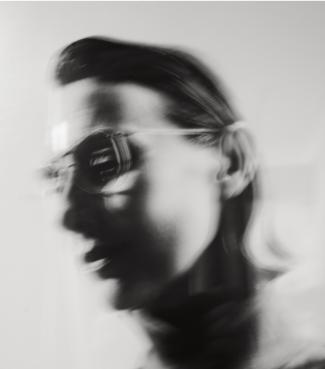
© Pierre Antoine
“Mannequins inhabit shops, museums, world’s fairs and studios. Standing, literally, on the border between art, design, commerce and display, they openly invite an artistic conversation”. These Lucy McKenzie’s words show the important place accorded to the mannequins in the reflexive practice of Atelier E.B. In their History Section, Lucy McKenzie and Beca Lipscombe have curated the whole of mannequins, a world of sculptural possibilities.
Atelier E.B sees them as full artworks. This confused border between display object and works is already explored by many artists all 20th century long. The sculptor Rudolf Belling (1923) proposes a mechanical aesthetics, while the painter Clovis Trouille (1930) really makes up his mannequins. The doll maker Sasha Morgenthaler (1948) dismisses the falsely cheerful demeanours of her dolls in infancy and advocates realism, showing a particular attention to detail. A replica of the personal mannequin of the fashion designer Charles James (1955) has an unusually dynamic shape in contrast with its plaster surface, making it a hybrid object between mannequin and sculpture.
The mannequin designer Adel Rootstein (1982) is aware of racial diversity to the point where she immortalises the singer Elaine Paige’s figure in fibreglass in order to illustrate growing fashions lines for petite women.
Finally the photographic reproduction of an outfit created by Bonnie Cashin (1959) shows the deep admiration of Beca Lipscombe for the fashion designer. It is made up of a cream cashmere polo neck and a pair of black leather trousers, which were showed during Fashion : An Anthology exhibition (1971) in the Victoria & Albert Museum and curated by the fashion photograph Cecil Beaton. The clothes’ clean and practical form is as a reflect of the simplicity and contemporaneity of the pioneer of sportswear. This outfit has never been photographed before Passer-by exhibition.

© Pierre Antoine

